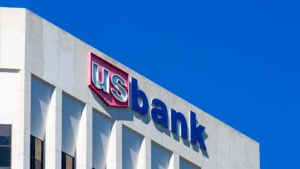Investing in well-known high-quality stocks is great if you’re looking for sustainable gains. However, we often fail to consider that most of the good stuff is already priced into widely dispensed assets. As such, I wanted to provide you with a list of stealth wealth stocks to consider going into 2024.
What do I mean by stealth wealth? I’m simply referring to under-the-radar stocks that possess significant value or growth prospects. Moreover, stealth assets are thinly traded, allowing investors to capture mispricing.
Despite the allure of stealth wealth investing, investors eventually catch onto these opportunities, leading to alpha decay. Therefore, it is critical to act quickly when spotting a stealth wealth opportunity.
With the aforementioned in mind, here are three overlooked stocks that could surge in 2024.
Stealth Wealth: U.S. Bancorp (USB)

U.S. Bancorp (NYSE:USB) is primed for gains in 2024. An implied U.S. interest rate pivot may lead to lower funding rates, concurrently assisting lenders such as U.S. Bancorp. Although many think lower interest rates will decrease banking profitability, a rise in credit spreads is common during the initial stages of interest rate tapers, lending bankers the necessary latitude to profit from a spread between borrowing and lending rates.
The bank’s latest fiscal report shows that approximately 60% of its revenue derives from interest-bearing activities. Moreover, commercial loans span about 35.6% of U.S. Bancorp’s lending mix. Therefore, it affirms the impact that a divergence between funding costs and lending rates might have in 2024. Additionally, 30.4% of U.S. Bancorp’s loan book is bound to mortgages. Sure, mortgage rates are decreasing. However, the bank could benefit from slightly lower mortgage rates as it will result in fewer late payments and defaults.
I selected USB stock as a stealth wealth asset because it is overlooked. USB stock’s average daily trading volume is merely 13.92% of the SPDR S&P 500 ETF Trust’s daily trading volume. Therefore, this suggests USB stock is thinly traded for a large-cap stock. Moreover, USB stock’s price-to-book ratio of 1.47x is below its 5-year average of 1.57x, communicating relative value. As if that isn’t enough to infer value, USB stock’s 4.42% dividend yield is best-in-class, adding substance to a total return argument.
Sibanye Stillwater (SBSW)

Sibanye Stillwater (NYSE:SBSW) is a deep value play after suffering from various exogenous shocks that dragged its stock down by nearly 50% year-over-year (YOY). However, matters are looking up going into the new year.
The exogenous factors I alluded to earlier pertain to energy grid problems in South Africa, floods in Sibanye’s U.S.-based mines, broad-based labor strikes, and lower platinum group metals (PGMs) prices. Most of Sibanye’s exogenous issues have eased. For example, South African load-shedding hours have tapered while Sibanye’s U.S. mines are up and running again. Although labor strikes could remain an issue next year, PGM prices are set to rebound due to an incoming global interest rate pivot and a shortage of supply in the PGM arena.
Sibanye holds a number of catalysts that few investors are aware of. For one, the mining house has committed itself to the green economy via a series of recent acquisitions, including the Keliber lithium mining project and the Reldan recycling plant. Moreover, Sibanye’s ever-growing position in the platinum arena aligns it with sustained growth via a possible surge in green hydrogen uptake.
Although this is a risky bet, SBSW stock’s price-to-book ratio of 0.74x communicates deep value. More crucially, the company’s fundamentals are aligned, phasing out the possibility of a value trap.
LVMH Moët Hennessy Louis Vuitton (LVMHF)

Despite LVMH’s (OTCMKTS:LVMHF) stature as a brand, its stock has yet to gain significant traction in the United States. LVMH’s average daily volume stands at 2732, illustrating that it is a thinly traded security. Thin trading often leads to mispricing, which is exactly what I see in LVMH stock.
I recognize that many are concerned by the economic cycle and its potential effects on retail stocks in 2024. However, LVMH is what’s called a Veblen goods retailer. In simpler terms, its presence as a luxury retailer is noncyclical due to its end market possessing the necessary balance sheets to spend throughout the economic cycle. As such, LVMH is unlikely to be influenced by top-down variables for now.
LVMH sports solid bottom-up characteristics. The firm’s latest 9-month revenue figures were released in October, wherein LVMH revealed 14% YOY growth in sales. Most of LVMH’s revenue growth stemmed from selective retailing, as segmental revenue surged by 26% YOY. Furthermore, LVMH’s fashion and leather goods segment sales concurrently increased by 16%, while its watch and jewelry segment gained by 9%. Although LVMH’s spirit sales slumped by 7% YOY, I expect holistic growth to be sustained in 2024, with momentum from Asia being a significant benefactor.
Key metrics imply that LVMH stock provides high-quality value. For instance, LVMH’s return on common equity of 29.56% is accompanied by a modest price-to-sales ratio of 4.39x. Even though LVMH stock isn’t known for illustrious gains, key metrics show that overlooked value is in store.
On the date of publication, Steve Booyens held an indirect long position in SBSW. The opinions expressed in this article are those of the writer, subject to the InvestorPlace.com Publishing Guidelines.

